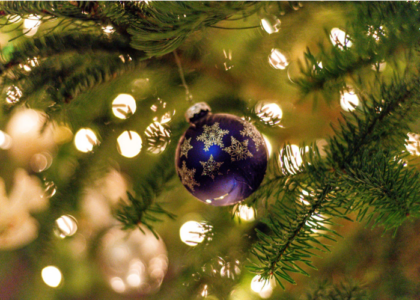History and Significance of Christmas Ornaments
The use of Christmas ornaments to decorate Christmas trees pre lit dates back to the 16th century in Germany, where they were made of fruits, nuts, and other natural materials. As time passed, the tradition evolved, and different cultures created their ornaments.
Nowadays, Christmas ornaments can be made from glass, paper, plastic, and other materials and come in all shapes and sizes, from snowflakes and reindeer to religious symbols like angels and crosses.
The significance of Christmas ornaments goes beyond their decorative purpose. They hold symbolic meaning and are often tied to Christian faith and the celebration of the birth of Jesus Christ.
The Biblical Connection to Adam and Eve’s Story
The Bible’s creation story in Genesis tells of how God created the world and all living things in it, including Adam and Eve, the first man and woman.
God created the Garden of Eden as a paradise for Adam and Eve to live in, and the garden was filled with beautiful trees and fruits for them to enjoy. However, God warned them not to eat from the Tree of Knowledge of Good and Evil, or they would surely die.
Unfortunately, the serpent tempted Adam and Eve and decided to eat from the forbidden tree. As a result, they were banished from the Garden of Eden, and sin and death entered the world.
The story of Adam and Eve’s fall from grace is central to Christian faith and is often seen as humans’ first disobedience to God. However, it also represents the hope of redemption and salvation in Christ.
The use of Christmas ornaments, specifically those that resemble the fruits of the Garden of Eden tree, symbolizes the story of Adam and Eve and the redemption offered through Christ. Mirrored balls, in particular, represent the fruit of the Tree of Knowledge of Good and Evil, reminding us of the sin and separation we experience and the forgiveness and salvation offered through Christ.
In Conclusion
The creation of Christmas ornaments holds a longstanding history and significant meaning for Christians. From the earliest use of natural materials to the modern-day designs made from various materials, these decorations remind us of the gift of salvation offered through Christ. Knowing the biblical connection behind the ornaments and how they relate to Adam and Eve’s story can deepen our appreciation for the season’s decorations and the faith they represent.





